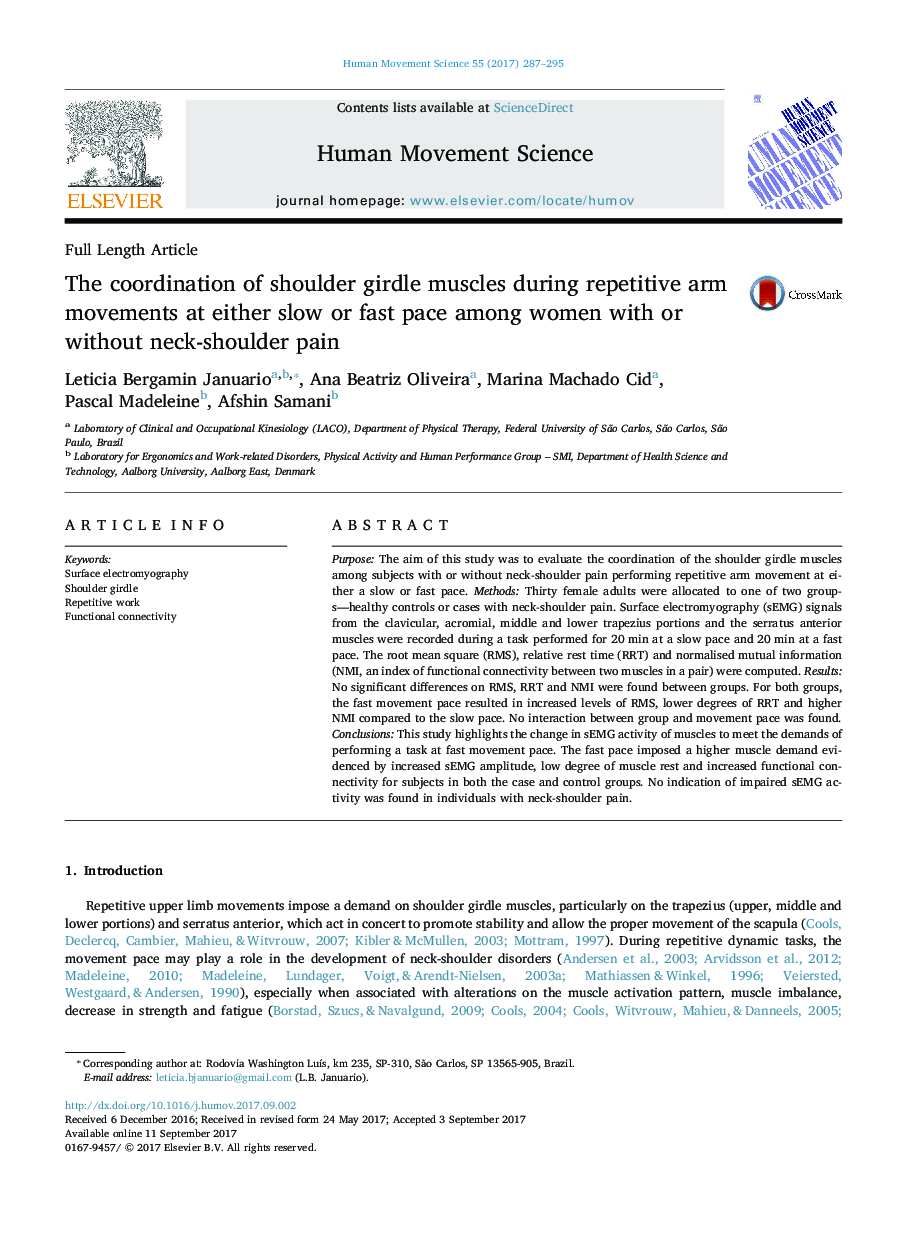| Article ID | Journal | Published Year | Pages | File Type |
|---|---|---|---|---|
| 5041952 | Human Movement Science | 2017 | 9 Pages |
â¢Repetitive arm movements were performed at two different paces.â¢No differences were found between subjects with and without neck-shoulder pain.â¢Higher biomechanical load was imposed over the shoulder girdle, during fast pace.â¢Muscle connectivity increased at fast pace, to maintain shoulder girdle stability.
Purpose: The aim of this study was to evaluate the coordination of the shoulder girdle muscles among subjects with or without neck-shoulder pain performing repetitive arm movement at either a slow or fast pace. Methods: Thirty female adults were allocated to one of two groups-healthy controls or cases with neck-shoulder pain. Surface electromyography (sEMG) signals from the clavicular, acromial, middle and lower trapezius portions and the serratus anterior muscles were recorded during a task performed for 20Â min at a slow pace and 20Â min at a fast pace. The root mean square (RMS), relative rest time (RRT) and normalised mutual information (NMI, an index of functional connectivity between two muscles in a pair) were computed. Results: No significant differences on RMS, RRT and NMI were found between groups. For both groups, the fast movement pace resulted in increased levels of RMS, lower degrees of RRT and higher NMI compared to the slow pace. No interaction between group and movement pace was found. Conclusions: This study highlights the change in sEMG activity of muscles to meet the demands of performing a task at fast movement pace. The fast pace imposed a higher muscle demand evidenced by increased sEMG amplitude, low degree of muscle rest and increased functional connectivity for subjects in both the case and control groups. No indication of impaired sEMG activity was found in individuals with neck-shoulder pain.
